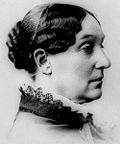- Oregon Ballot Measure 40 (1996) and subsequent measures
-
Ballot Measure 40 was an Oregon ballot measure in 1996. The measure brought sweeping reforms to Oregon's justice system, generally in an effort to promote victims' rights.
Measure 40 passed with 58.8% of the vote, but was overturned by the Oregon Supreme Court in 1998, on the grounds that it contained more than one amendment to the Oregon Constitution.[1]
Measure 40 case precedent has since been cited as the basis for overturning several voter-approved initiatives. Among these are legislative term limits in 2002 and Measure 3, the Oregon Property Protection Act of 2000.
Kevin Mannix, the state legislator behind Measure 40, shepherded many of its provisions through the Legislature as statutory enactments (in Senate Bill 936 of 1997) while Measure 40 was being considered in the courts, placing many of the constitutional provisions of Measure 40 into statutory law.[2]
Contents
Armatta v. Kitzhaber
The 1998 Oregon Supreme Court ruling Armatta v. Kitzhaber[1] was a landmark decision for constitutional amendments. A similar decision in California, Jones, had recently upheld the "single subject rule," which essentially states that a single constitutional amendment measure cannot affect more than one subject in the Constitution.[3]
But the Oregon decision went further, stating that a constitutional amendment cannot affect more than a single clause of the Constitution, even if multiple clauses affect the same subject. The decision has had a significant impact on the way initiative drafters have approached their work in the years since.[3]
Mannix subsequently brought seven more measures (Measures 69-75) to voters in 1999 via legislative referral, each originally part of Measure 40. All seven would have amended the Oregon Constitution. Four of the measures were approved by voters. Campaigns for these measures were primarily funded by conservative millionaires Loren Parks and Mark Hemstreet.
Meas
numpassed? Yes No % Ballot Title 69 YES 406393 292419 58.15 Grants Victims Constitutional Rights In Criminal Prosecutions, Juvenile Court Delinquency Proceedings 70 NO 289783 407429 41.56 Gives Public, Through Prosecutor, Right To Demand Jury Trial In Criminal Cases 71 YES 404404 292696 58.01 Limits Pretrial Release Of Accused Person To Protect Victims, Public 72 NO 316351 382685 45.26 Allows Murder Conviction By 11 To 1 Jury Verdict 73 NO 320160 369843 46.4 Limits Immunity From Criminal Prosecution Of Person Ordered To Testify About His Or Her Conduct 74 YES 368899 325078 53.16 Requires Terms Of Imprisonment Announced In Court Be Fully Served, With Exceptions 75 YES 399671 292445 57.75 Persons Convicted Of Certain Crimes Cannot Serve On Grand Juries, Criminal Trial Juries See also
References
- ^ a b Armatta v. Kitzhaber, 327 Or. 250, 959 P.2d 49 (1998)
- ^ "Desperate Measures". Willamette Week. October 20, 1999. http://www.wweek.com/html/leada102099.html. Retrieved 2007-03-12.
- ^ a b Manweller, Mathew (2005). The People Vs. the Courts: Judicial Review and Direct Democracy in the American Legal System. Academica Press. pp. 220–221. ISBN 1930901976. http://books.google.com/books?id=IfsNhpD15SgC&pg=PA220&lpg=PA220&ots=A8gWIZ3agm&sig=di5mInzwgxF4FwaKX44unFd6B2g&hl=en#PPA221,M1.
External links
- Chief Petitioner Kevin Mannix on BallotPedia.org
- Online Voters' Guide entry for Measure 40, from the Oregon Secretary of State
- Secretary of State's page on 1999 Special Election, with links to information about Measures 69–75]
Topics in Oregon legislation Crime and sentencing Capital punishment · Measure 11 (1994) (mandatory minimum sentencing) · Measure 40 (1996) etc. (victims' rights) Abigail Scott Duniway was instrumental in establishing women's right to vote in Oregon.
Abigail Scott Duniway was instrumental in establishing women's right to vote in Oregon.
Elections and voting Gay rights Environment Land use Health care Minimum wage Taxation Tax revolt · Measure 5 (1990) (landmark tax law) · Measures 47 (1996) and 50 (1997) (adjusted Measure 5) · Kicker (tax rebate)Miscellaneous Influential people Background, further reading Categories:- Oregon ballot measures
- Oregon 1996 ballot measures
- Penal system in Oregon
- Oregon government stubs
Wikimedia Foundation. 2010.
